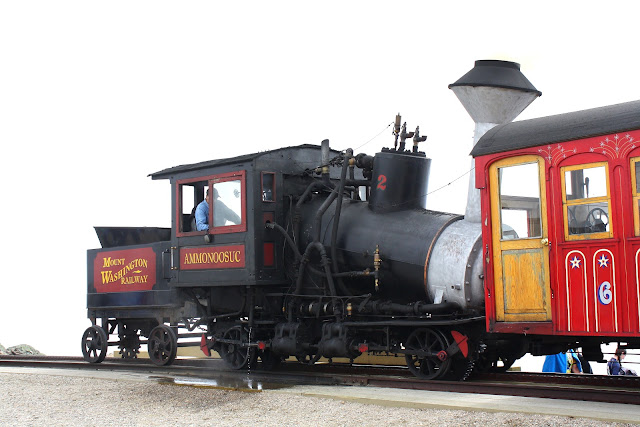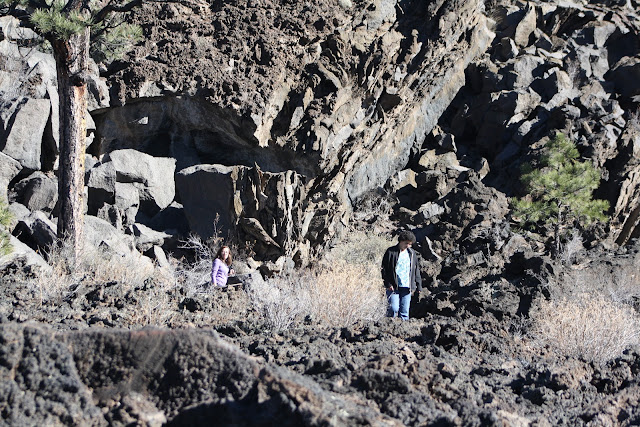In April 1934, the observatory recorded a 231-mile-per-hour (372 kmh) wind that remains a world record for a land-based weather station. Some of the observatory buildings are secured to the summit with chains to keep them from blowing away. Temperatures atop the mountain can drop as low as -47 degrees Fahrenheit (-44 C)
On the clearest days, observers can see as far as Mount Marcy in New York State, 134 miles to the west.
Just The Facts....
1.The Mount Washington Cog Railway was the first mountain climbing cog railway in the world.
2.The Mount Washington Cog Railway was created and designed by Sylvester Marsh of Campton, New Hampshire.
3. The first locomotive, Old Peppersass, so named because it resembled an old pepper sauce bottle, reached the summit of Mount Washington on July 3, 1869. Today it is on display at the base station.
4. Jacob's Ladder is the steepest section of the Cog's trestle, with a 37% grade. This means that there is an elevation difference of 13 feet between passengers in the front and back of the coach!
5. Each trip to the summit on the Cog Railway uses 1 ton of coal, and 1,000 gallons of water.
6. The Mount Washington Cog Railway was named a National Historic Engineering Landmark on June 26, 1976.
7. Mount Washington is the highest summit in the northeastern part of the U.S. - elevation 6,288-feet.
8. Darby Field of Exeter, New Hampshire, was the first man known to have reached the mighty summit of Mount Washington in 1642. Indian legend stated that the summit was home to the Great Spirit and death would come to any human who ascended the peak.
9. The oldest building on the summit is the Tip Top House, built in 1853.
10. The Lake of the Clouds is said to be the highest body of water in the eastern part of the United States.
11. The average annual snowfall on the summit of Mount Washington is 177 inches.
12. A continental ice sheet once covered Mount Washington, and there is permanently frozen ground just beneath the summit.
13. The lowest recorded temperature at the summit was -49 degrees Fahrenheit; the highest was +74 degrees. The temperature on the summit falls below zero more than 65 days a year.
14. The average annual wind velocity at the summit is 37 mph. The highest wind velocity ever recorded in the world was at the summit of Mount Washington in April 1934 - at 231 mph!
(Source: The Mount Washington Cog Railway http://ow.ly/VO0mU)
 |
| Busy Day at the summit today it was "Race to the Top Bike Challenge" Road Race Day today. The oldest building on the summit is the Tip Top House, built in 1853 |
The Mount Washington Observatory has been staffed continuously since 1932, with the exception of a brief evacuation in February 2004 due to a fire.
 |
| Going Up! |














































